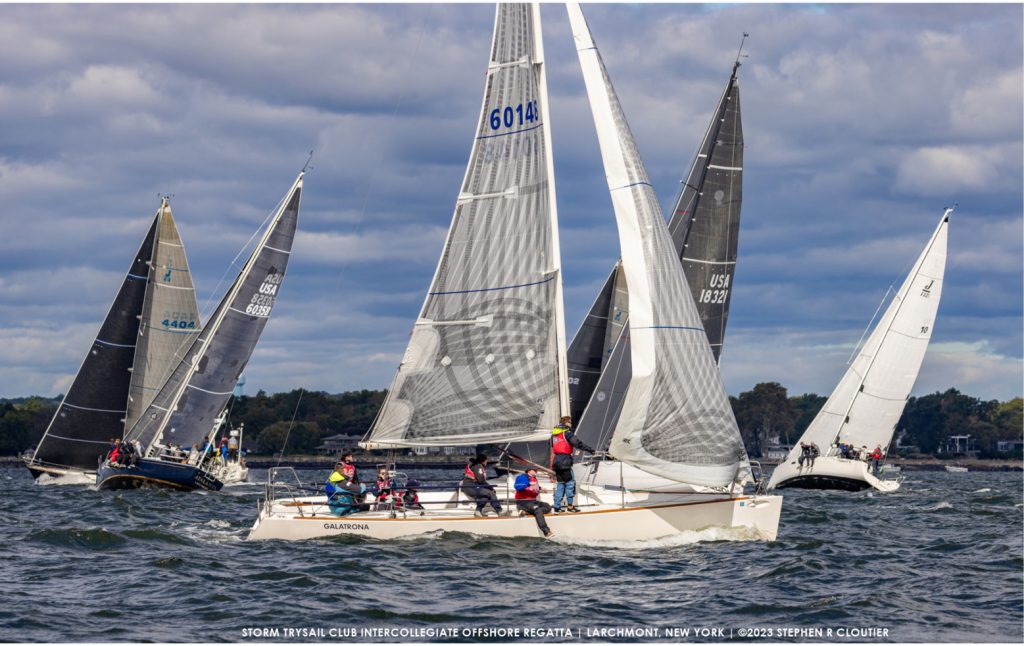Using a line “sight” or “range” at the start is a tried-and-true method for making sure you are as close to the starting line as possible at the gun (but not OCS). I always use a line sight whenever I can find one, and this has helped me get some great starts. But there is one thing I do a little differently than many sailors.
The standard way to get a line sight is by sailing outside the committee boat end, lining up their orange flag with the pin buoy, and looking for a range mark on shore beyond the pin. If you can find a house or a big tree, for example, this will help you determine the position of the line as you make your final approach to the start.
This procedure works great, but it has one major flaw: When you are lining up for the start, you are always below the line, and other boats are usually blocking your view to leeward of the pin end. So it’s very difficult to see your range on shore. Once you do see your range lined up with the pin end it means you are exactly on the line, but unfortunately this is not a good place to be before the starting gun. That’s why I modify my technique for getting and using a line sight.

Should you go left or right? Or up the middle? The answer depends on a number of strategic factors that you must try to figure out before the start. The plan you make will then tell you how to approach the start. © Stephen R Cloutier
Instead of going outside the race committee boat and trying to line up the two ends exactly, I take my sight from below (1 to 4 boatlengths to leeward of) the committee boat. This is easier and more effective. It eliminates the need to get an exact sight along the starting line, which is difficult when you are trying to dodge other boats, see through the committee boat and find the pin end buoy (which is usually blocked by other competitors’ sails).
More importantly, having a line sight from below the RC boat is much more useful as you approach the start. You can actually see your range on shore while you are luffing below the line before the starting gun! When this range lines up with the pin end, it functions as a good “safety range” because you know you are below the line. Also, if you noticed how far you were
below the RC boat when you took the sight, you can estimate pretty accurately how far you are below the line when your range lines up with the pin (depending on where you are on the line). This makes much more sense than having a range that requires you to sail upwind to the line to see it. ■
This article originally appeared in David Dellenbaugh’s Speed & Smarts, The newsletter of how-to tips for racing sailors. If you want to sail faster and smarter, log onto SpeedandSmarts.com.
A resident of Easton, CT, Dellenbaugh was tactician and starting helmsman for America3’s successful defense of the America’s Cup in 1992. He’s a Lightning World Champion, two-time Congressional Cup winner, seven-time Thistle National Champion, two-time winner of the Canada’s Cup, three-time Prince of Wales U.S. Match Racing Champion, and a winner of the U.S. Team Racing Championships for the Hinman Trophy.



